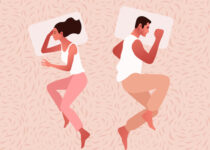Stretching Guide: Essential Types, Benefits & Easy Moves
Stretching guides offer various types benefiting flexibility, posture, and stress reduction. Beginners can start with basic stretches to enhance mobility and prevent injuries.
Starting a stretching routine can vastly improve your physical health and overall well-being. Exploring different types of stretching guides, such as dynamic, static, ballistic, and PNF stretching, allows you to find the approach that works best for you. Beginners will appreciate the simplicity of basic stretches, which can lay the foundation for a more advanced practice later on.
Embarking on this journey helps not only in improving flexibility but also in correcting posture, alleviating stress, and increasing blood flow to your muscles. Incorporating stretching into your daily routine is a simple, yet effective way to keep your body functioning optimally. With the right guide, even the most novice individuals can safely and efficiently work towards a more limber and pain-free lifestyle.
Essential Types Of Stretches
Stretching can be as essential to a well-rounded fitness routine as strength and cardio workouts. But with various types of stretches to choose from, knowing which is best for your needs can be confusing. This guide delves into the world of stretching, outlining the distinct categories, each with its particular benefits and applications. So whether you’re a beginner or looking to refine your stretching routine, understanding these essential types will enhance your flexibility, reduce injury risk, and improve overall performance.
Static Stretching And Its Characteristics
Static stretching is one of the most common forms, where a stretch is held in a challenging but comfortable position for a period, usually between 15 to 60 seconds. This type is ideal for cooling down after a workout, as it helps to relax muscles, improve flexibility, and slow down the heart rate. Some key characteristics include:
- Relaxation: Targets muscle relaxation and lengthening.
- Post-activity: Best performed after physical activity.
- Stability: Involves holding a position with controlled breathing.
Dynamic Stretching Explained
Unlike static stretches, dynamic stretching involves movement. These are active movements that bring your muscles through their full range of motion. They are typically used as part of a warm-up routine to prepare your body for physical activity, mimicking the movements of the sport or activity to follow. Characteristics of dynamic stretching include:
- Movement-based: Uses controlled swinging, twisting, or other motions.
- Pre-activity: Ideal before exercising to increase body temperature and muscle elasticity.
- Functional: Can be tailored to the specific movements of different sports or activities.
Proprioceptive Neuromuscular Facilitation (pnf) Techniques
PNF stretching is a more advanced form of flexibility training that involves both the stretching and contracting of the targeted muscle group. PNF techniques are typically done with a partner and can involve passive stretching and active muscle contractions. Benefits and characteristics of PNF stretching include:
- Advanced: Combines passive and active movements.
- Controlled resistance: Involves a partner providing resistance during contractions.
- Flexibility gains: May produce quick improvements in flexibility.
Ballistic Stretching Limitations And Uses
Ballistic stretching uses the momentum of a moving body part to force it beyond its usual range of motion. This type of stretching is not commonly recommended due to the risk of injury it poses, but it can be useful for certain applications under the guidance of a professional. Here are some considerations:
- High-risk: Greater chance of injury due to fast, jerky movements.
- Performance-specific: Sometimes used by athletes in very specific training settings.
- Limited use: Typically not recommended for general fitness routines.
Active Isolated Stretching Benefits
Active Isolated Stretching (AIS) involves extending a muscle, holding it for just a few seconds, then relaxing the stretch and repeating multiple times. This stretching type focuses on isolating specific muscles to improve the oxygen delivery and increase the flow of blood and nutrients to the muscles. Here’s a look at AIS benefits:
- Isolation: Targets specific muscles or muscle groups.
- Short holds: Typically held for 2 seconds, reducing the risk of overstretching.
- Increased circulation: Helps to enhance blood flow and reduce muscle recovery time.
Benefits For Your Daily Routine
Incorporating a consistent stretching routine into your daily life can yield noticeable benefits that enhance not just your workouts, but your overall well-being. Understanding these advantages will motivate you to make stretching a non-negotiable part of your day. Let’s explore the vital roles stretching plays in your daily routine.
Improving Flexibility And Range Of Motion
Regular stretching substantially improves your flexibility, which is an essential component of overall fitness. Flexibility enables smoother movement throughout daily activities and increases the range of motion in your joints. This leads to better performance in physical activities, diminishes the difficulty of daily tasks, and can even enhance your posture. Simple stretches, held for at least 30 seconds, can make a significant difference.
Enhancing Muscle Recovery Post-workout
Post-workout stretches are vital in the muscle recovery process. They help to reduce muscle tension and assist in the repair of muscle fibers. Stretching after exercising facilitates a decrease in muscle soreness and stiffness by promoting blood flow and nutrient supply to the muscles, which shortens recovery time and prepares your body for the next physical challenge.
The Role Of Stretching In Injury Prevention
One of the key benefits of stretching is its role in injury prevention. By increasing the flexibility and strength of muscles, you reduce the risk of muscle strains and sprains. Consistent stretching keeps muscles long and limber, so they are less likely to become overstretched and injured during physical activity. This proactive approach is essential for anyone looking to maintain an active lifestyle.
Stress Reduction And Stretching
Relieving tension in the muscles through stretching is a fantastic way to combat stress. During high-pressure periods, our bodies tend to hold stress in muscle groups such as the neck, shoulders, and lower back. Stretching these areas can help to release stress and induce a state of relaxation throughout the body. Consider including stretching in your daily stress-management strategy for a more tranquil mind and body.
How Stretching Can Aid In Better Sleep
Stretching can also be a powerful ally in the quest for better sleep. Engaging in a relaxing stretching routine before bedtime can prepare your body for rest by calming the nervous system. The gentle movement and breathing patterns involved in stretching can reduce nighttime restlessness and lead to a deeper, more restful sleep. Try incorporating stretches that focus on relaxation and breathing to maximize these sleep benefits.
Personalizing Your Routine
Personalizing your stretching routine is crucial to enhancing flexibility, preventing injury, and tailoring the benefits specifically to your body’s needs. Whether you’re a seasoned athlete or a yoga novice, understanding how to customize your stretches based on your activity level and goals can vastly improve your overall fitness journey. Let’s delve into creating a regimen that speaks to your flexibility needs and maximizes the rewards.
Assessing Your Flexibility Needs
Determining your personal flexibility requirements is the first critical step. Begin by identifying your tight spots and what might be causing them. Is it prolonged sitting? Rigorous workouts? Or perhaps lack of activity? Once you’ve pinpointed these areas, incorporate targeted stretches that address specific muscles. This approach ensures you’re not just going through the motions but making each stretch count towards improving your flexibility where it matters most.
Balancing Your Stretching With Activity
It’s important to strike a balance between stretching and other activities. If your primary exercise is high-intensity, complement it with dynamic stretches that prepare your muscles for explosive movements. Conversely, if your lifestyle is more sedentary, focus on static stretches that enhance muscle relaxation and lengthening. Remember, your stretching regimen should act as a complement, promoting recovery and performance in whatever activities you engage in.
Allocating Time For Each Stretch Type
When distributing time among various stretches, consider both the nature of the stretch and your own limitations. For dynamic stretches, spend around 5-10 minutes with movements that imitate your main activity. With static stretches, hold each position for about 15-30 seconds, ensuring you’re breathing deeply to help deepen the stretch. Timing is key, and distributing it effectively can greatly enhance the efficacy of your stretching routine.
Frequency And Duration For Optimal Benefits
- Frequency: Aiming for a daily stretching routine lends to better flexibility and reduced muscle tension. Including shorter, frequent sessions can be more beneficial than occasional longer sessions.
- Duration: Total stretching time should be around 10-15 minutes per session. However, customize this based on personal goals and time constraints.
The Importance Of Warm-up And Cool-down
Never underestimate the power of warming up and cooling down. Start your exercise with gentle movements that increase blood flow to the muscles, preparing them for the stretches to follow. Post-activity, use stretches as a cool-down to reduce muscle soreness and aid in recovery. Ensuring your muscles are properly prepared before stretching and gently worked through post-activity leads to optimal performance and reduced risk of injury.
Easy Moves For Beginners
Starting a stretching routine can transform your day-to-day life, offering benefits from improved flexibility to stress relief. With the right set of moves, even beginners can easily integrate stretching into their daily routine. This section provides simple and effective stretching exercises tailored for specific needs, ensuring a seamless integration into your lifestyle. Ideal for those new to stretching, these beginner-friendly moves require no special equipment and can be done anywhere, anytime.
Upper Body Stretches For Desk Jobs
Long hours at a desk can lead to tension and stiffness in the upper body. These stretches target the neck, shoulders, and arms, areas often impacted by desk work.
- Neck Side Stretch: Tilt your head to the right, bringing your ear closer to the shoulder. Hold, then repeat on the left side.
- Shoulder Shrugs: Lift your shoulders to your ears, hold for a few seconds, then release.
- Arm Circles: Extend your arms and make small circles, gradually increasing size. Repeat in both directions.
Lower Body Stretches For Runners
For those who enjoy running, lower body flexibility is crucial. Here are some stretches that target the legs and hips to help enhance performance and reduce the risk of injury.
- Quadriceps Stretch: Stand on one leg, pull the other foot to your buttocks, and hold. Switch legs after 30 seconds.
- Hamstring Stretch: Sit on the ground, extend one leg out, and reach for your toes. Hold, then switch legs.
- Calf Raises: Stand with your feet hip-width apart, raise your heels off the ground, and slowly lower them down.
Full-body Stretches For General Health
A well-rounded stretching routine can benefit the entire body. These full-body stretches are perfect for overall flexibility and relaxation.
- Cat-Cow: On all fours, alternate between arching your back and dipping it down while raising your head.
- Child’s pose: Sit back on your heels with your arms extended forward on the floor, relaxing your entire body.
- Seated Forward Bend: Sit with your legs straight in front of you, reach forward with your arms and bow your head toward your knees.
Stretching Guide: Simple Office-friendly Moves
| Stretch | Targeted Area | Description |
|---|---|---|
| Wrist Flexor Stretch | Wrists and Forearms | Extend your arm and use the opposite hand to gently pull back on your fingers. |
| Torso Twist | Midsection | While seated, twist your torso to one side, using your chair’s back for support. Repeat on the opposite side. |
| Ankle Stretch | Ankles and Feet | Rotate each ankle clockwise and then counterclockwise to improve circulation and flexibility. |
Integrating Movement And Stretch
Integrating Movement and Stretch is a dynamic approach for enhancing flexibility, strength, and overall well-being. It goes beyond traditional static stretching by merging active movement patterns with stretches, creating a more holistic and functional routine. This method serves not only to improve range of motion but also to engage the mind-body connection, vital to achieving balanced fitness. For beginners and more experienced individuals alike, weaving movement with stretch can lead to significant gains in mobility and physical harmony.
Incorporating Yoga And Pilates Elements
Introducing elements of Yoga and Pilates into a stretching routine amplifies the benefits. These practices strengthen the core, enhance balance, and promote flexibility. For those new to these practices:
- Begin with basic yoga poses like the Downward-Facing Dog or Warrior sequences to encourage body awareness.
- Explore Pilates exercises such as the Hundred or Leg Circles to build a strong foundation and alignment.
Yoga and Pilates are excellent for teaching breath control, which is integral for deep stretches and maintaining focus during practice.
Using Equipment: Bands And Foam Rollers
Stretching equipment like resistance bands and foam rollers can drastically improve one’s stretching technique. Resistance bands assist with:
- Deepening stretches without straining.
- Adding resistance for strength-building stretches.
- Assisting with flexibility in hard-to-reach muscle groups.
For self-myofascial release to reduce muscle tightness, foam rollers are unparalleled. Rolling out the legs, back, and arms before and after workouts can help prevent injury and speed up recovery.
Advanced Techniques For Athletes
Athletes require a tailored stretching plan to optimize performance and avoid injury. Advanced techniques such as:
| Technique | Benefits |
|---|---|
| Dynamic Stretching | Prepares the body for intense activity |
| PNF Stretching | Increases muscular strength and flexibility |
By including sophisticated movements such as ballistic stretches or sport-specific drills, athletes can elevate their flexibility to match their performance needs.
Stretching Guide: Adding Variety With Ease
To maintain progress and prevent monotony, infusing variety into a stretching routine is key. Experiment with new stretches or alter existing ones by:
- Changing the angle of the stretch.
- Adjusting the duration or incorporating interval stretches.
- Combining stretches in a seamless flow for a full-body effect.
Variety encourages continuous improvement and helps engage different muscle groups for a comprehensive stretch experience.
Tracking Progress And Evolving
Tracking Progress and Evolving is a crucial part of any stretching routine for beginners and seasoned stretchers alike. Celebrating each milestone not only boosts motivation but also ensures that your stretching sessions are efficient and effective. Progress can be subtle, but by setting achievable stretch goals and listening to your body’s cues, you’ll continue to improve flexibility and overall well-being. Let’s explore how to mark your stretching journey’s growth!
Setting Stretch Goals And Milestones
Creating a roadmap for your stretching journey starts with setting personalized goals. These should be achievable, realistic, and time-bound. For instance, targeting to touch your toes in six weeks or hold a pigeon pose for a minute without discomfort might be your initial milestones.
- Weekly Goals: Short-term objectives to keep you on track.
- Monthly Check-Ins: Evaluate and reflect on your progress.
- Flexibility Tests: Simple assessments to see where you stand.
Modifying Stretches As You Advance
As your flexibility increases, modifying stretches to present a challenge is necessary for continuous improvement. This might mean increasing the duration of each stretch, adding dynamic movements, or exploring deeper variations of the stretch. An example could be transitioning from a half split to a full split once your hamstrings become more pliable.
| Beginner Stretch | Advanced Modification |
|---|---|
| Seated Forward Bend | Seated Forward Bend with a yoga block |
| Kneeling Hip Flexor Stretch | Kneeling Hip Flexor Stretch with a reach-over |
Listening To Your Body’s Feedback
Attuning to your body’s signals is non-negotiable. Recognizing the difference between a healthy stretch and one that induces pain ensures that you respect your body’s current limits. A slight discomfort is common, but sharp pain is a red flag. Keep a stretching diary, noting how each stretch feels, and adjust your practice accordingly.
“Stretching should challenge your body, not strain it.”
Celebrating Flexibility Achievements
Celebration is a powerful tool in maintaining motivation and acknowledging your hard work. Whether it’s finally mastering a full split or noticing increased ease in daily movements, taking time to rejoice in these wins is vital. Reward yourself with a new yoga mat, a restorative massage, or simply a moment of gratitude for your body’s capabilities.
- Recognize personal achievements: take note of even the smallest progress.
- Share your progress: whether it’s with a friend or on social media, sharing can be incredibly affirming.
- Reflect on the journey: appreciate how far you’ve come from when you started.

Credit: www.healthline.com
Conclusion
Embracing the power of stretching can transform your daily routine. With the right stretches, beginners can unlock flexibility and reduce injury risks. This guide serves as a roadmap to enhance your physical wellness journey. Start stretching today, and feel the difference it makes in your health and vitality.
Let’s bend towards a healthier future together!
Table of Contents


